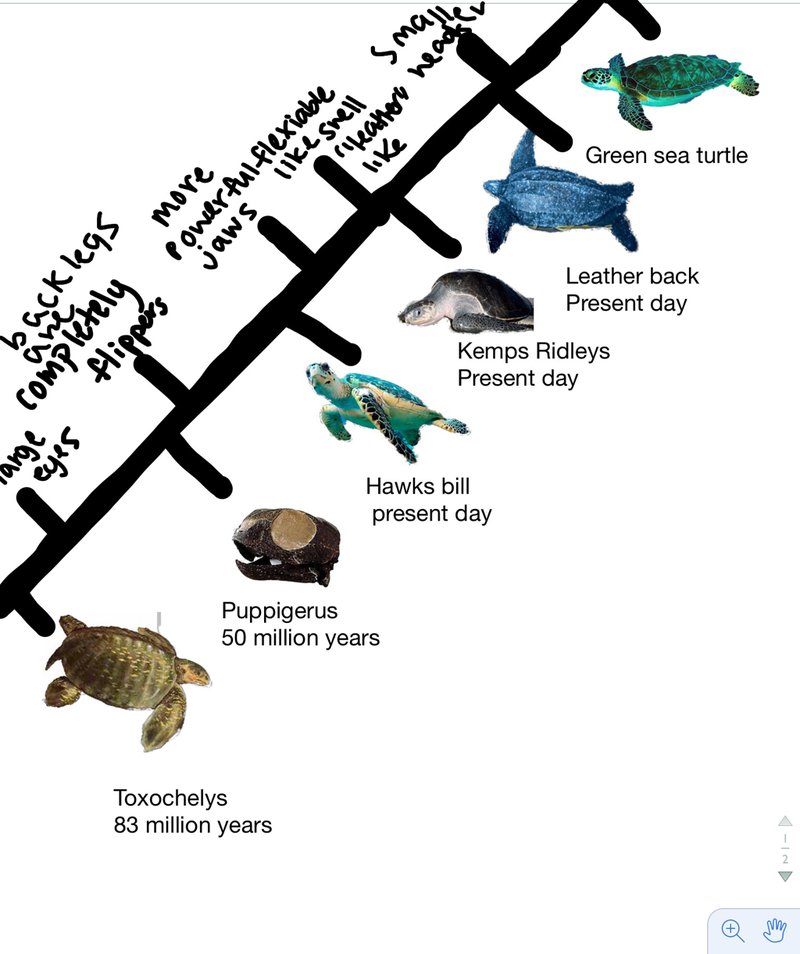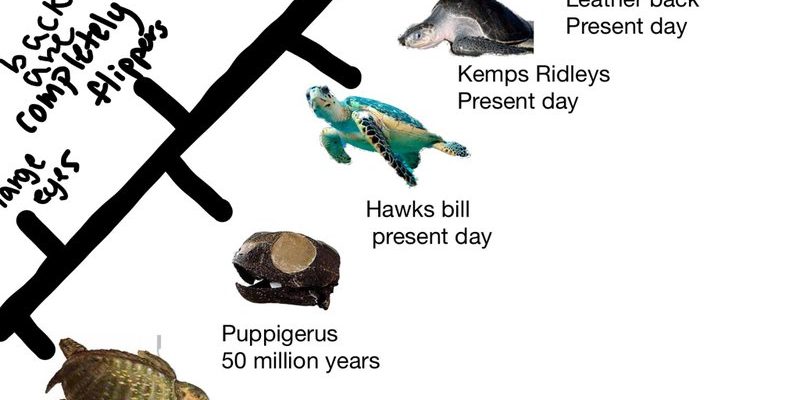
Imagine sitting on the beach, watching a turtle make its way back to the sea after laying eggs. This moment is a snapshot of a lineage that dates back over 200 million years. Back when dinosaurs roamed the Earth, sea turtles were already making their presence known. It’s a reminder of how resilient and adaptable life can be. So, grab a cup of coffee, and let’s dive into the remarkable journey of these fascinating reptiles.
From Land to Sea: The Ancestors of Sea Turtles
To understand sea turtles today, we need to rewind time—way back to the Triassic period, over 200 million years ago. During this time, the earth was a very different place, full of lush vegetation and various ancient reptiles. The ancestors of modern sea turtles first emerged as land-dwellers, resembling today’s terrestrial turtles. They were quick, agile creatures that roamed the land and sought shelter in their shells when danger approached.
As environmental changes occurred, some of these turtles ventured into the waters. Think of it like a child learning to swim: They may feel nervous at first, but the water offers a new world of discovery. Over time, adaptations began to take shape. For instance, their bodies became more streamlined for swimming, and their flippers evolved from limbs to help them navigate the ocean currents. These early adaptations set the stage for survival in a watery realm, where life was abundant but also fraught with challenges.
The Characteristics of Sea Turtles: An Adaptation Masterclass
Sea turtles are remarkable for their adaptations that allow them to thrive in ocean environments. They have evolved incredibly strong, flexible shells that protect them from predators and powerful ocean currents. Their streamlined bodies reduce drag while swimming, making them efficient travelers of the sea. You might even say they’re the racecars of the ocean!
Another fascinating feature is their ability to dive deep for food. Sea turtles can hold their breath for up to several hours, depending on the species. Some turtles, like the leatherback, can dive to depths of over 4,000 feet in search of jellyfish, which are their favorite snack! Imagine holding your breath and diving into chilly waters for lunch—sea turtles do it all the time!
Not only do sea turtles have unique physical traits, but they also exhibit fascinating behavioral adaptations. For example, they navigate the vast oceans using the Earth’s magnetic fields. Yes, you read that right! These turtles have an innate sense of direction, allowing them to migrate thousands of miles between feeding and nesting grounds. It’s like having built-in GPS for their journeys!
The Influence of Environmental Changes
As the world continues to change, sea turtles have faced numerous challenges throughout their evolutionary journey. Climate change, habitat destruction, and pollution have put immense pressure on these gentle giants. Over the past few decades, human activities have dramatically impacted the oceans, forcing turtles to adapt even further.
For instance, rising ocean temperatures are affecting nesting sites. Female turtles often return to their birth beaches to lay eggs, but with climate change altering shoreline dynamics, suitable nesting sites are becoming scarce. This situation is concerning; if turtles can’t find safe places to lay their eggs, their populations could dwindle.
Additionally, the rising sea levels pose another threat. Coastal erosion and flooding can destroy vital nesting habitats. It’s a tough reality, but sea turtles are resilient. They have survived multiple mass extinctions and environmental shifts; their ability to adapt is truly remarkable. The question remains, though: will they be able to adjust fast enough this time?
Conservation Efforts and the Importance of Protecting Sea Turtles
As humans, we play a critical role in the fate of sea turtles. Conservation efforts have become increasingly important as we recognize the impact of our actions on the environment. Various organizations are working tirelessly to protect nesting sites, promote sustainable fishing practices, and reduce plastic pollution in the oceans.
One common initiative is the protection of nesting beaches. Volunteers often patrol these areas to ensure that turtle eggs are safe from predators and human interference. With the right protections, hatchlings can make their way to the sea, where they’ll begin their own journeys. It’s heartwarming to see communities come together to support these ancient creatures!
You might wonder how you can help. Simple actions like reducing plastic use, recycling, and supporting conservation organizations make a significant difference. Every small step counts. By engaging in local clean-up efforts or spreading awareness, you contribute to a healthier ocean ecosystem, ensuring that future generations can marvel at the beauty of sea turtles.
The Future of Sea Turtles: Challenges and Hope
As we look ahead, the future of sea turtles hangs in a delicate balance. The changes in their habitat and the ongoing threats from pollution and climate change are daunting. However, there’s always room for hope. Education, community involvement, and more significant legislative support can lead to positive changes for these magnificent creatures.
Research continues to play a vital role in understanding turtle behavior, health, and migration patterns. Scientists are using innovative technologies like satellite tracking to monitor turtle movements, which helps identify critical habitats that need protection. With more data, conservationists can develop better strategies to safeguard sea turtles and their environments.
While the road ahead is challenging, the story of sea turtles is one of resilience and adaptation. Their evolutionary journey is a testament to nature’s ability to endure and overcome. So, as you venture out to enjoy the beach, take a moment to appreciate these incredible creatures and consider how we can work together to ensure their survival.
The evolution of sea turtles is more than just a fascinating tale of survival; it’s a reminder of the interconnectedness of all life on our planet. These gentle giants have existed for millions of years, adapting to the changing tides of time and environment. Their story is a legacy worth preserving for generations to come.
By understanding their journey, we can better appreciate the importance of protecting these amazing reptiles. Let’s commit to educating ourselves and others about the challenges they face and how we can contribute to their conservation. Remember, every effort counts, no matter how small! Sea turtles are not just a part of our ocean world; they are a testament to the beauty and resilience of nature.

